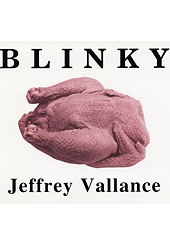1950s
Follies of the Madmen #321
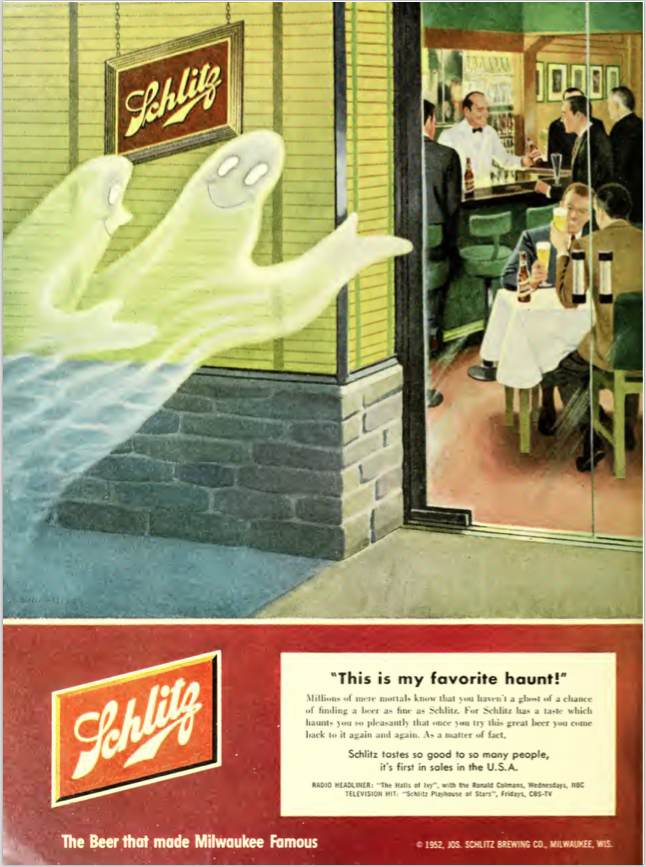
"Dead people like our beer."
From the American Legion magazine for May 1952.
Posted By: Paul - Tue Jul 25, 2017 -
Comments (5)
Category: Business, Advertising, Products, Horror, 1950s, Alcohol
Paul Whiteman’s TV Teen Club
Imagine someone like Paul Whiteman being a teen idol or mentor these days.
More info here.
Posted By: Paul - Mon Jul 24, 2017 -
Comments (2)
Category: Music, Television, Teenagers, 1950s
The Florida Trio
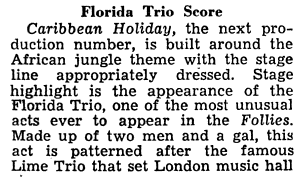
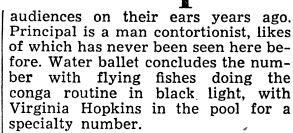
Source.
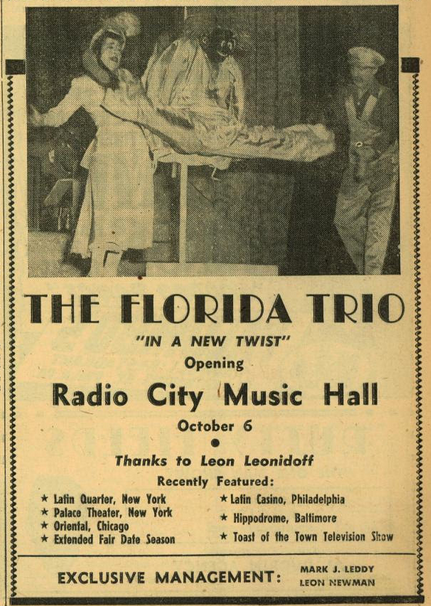
Source.
Posted By: Paul - Sat Jul 22, 2017 -
Comments (1)
Category: Entertainment, 1940s, 1950s
The Maid of Cotton Pageant
Continuing our intermittent look at oddball beauty pageants.The Maid of Cotton pageant began in 1939. The annual pageant was sponsored by the National Cotton Council (NCC), Memphis Cotton Carnival, and the Cotton Exchanges of Memphis, New York, and New Orleans. The pageant was held in Memphis, Tennessee, in conjunction with the Carnival until the 1980s.
In mid-December every year the NCC released a list of contestants. Contestants were required to have been born in one of the cotton-producing states: Alabama, Arizona, Arkansas, California, Florida, Georgia, Kentucky, Louisiana, Mississippi, Missouri, New Mexico, North and South Carolina, Oklahoma, Tennessee, Texas or Virginia. They might have also been born in the cotton-producing counties of Alexander, Jefferson, Massac, Pulaski, Williamson or Madison, Illinois or in Clark or Nye counties of Nevada. There were usually twenty contestants each year.
Contestants were judged on personality, good manners, intelligence, and family background as well as beauty and an ability to model. A Top Ten were chosen and then a Top Five, and finally second and first runners up and a winner. Winners served as goodwill and fashion ambassadors of the cotton industry in a five-month, all-expense tour of American cities. In the mid-1950s the tour expanded globally. In the late 1950s a Little Miss Cotton pageant was begun but lasted only until 1963 before being discontinued. In the mid-1980s Dallas,Texas took over the pageant, in conjunction with the NCC and its overseas division, Cotton Council International. In 1986, to bolster interest and participation, the NCC eliminated the rule requiring contestants to be born in a cotton-producing state. The pageant was discontinued in 1993, one of the reasons being that Cotton Inc. stopped contributing scholarship money as well as waning public interest and changing marketing strategies.
More details here.
And also here.
The 1952 winner.

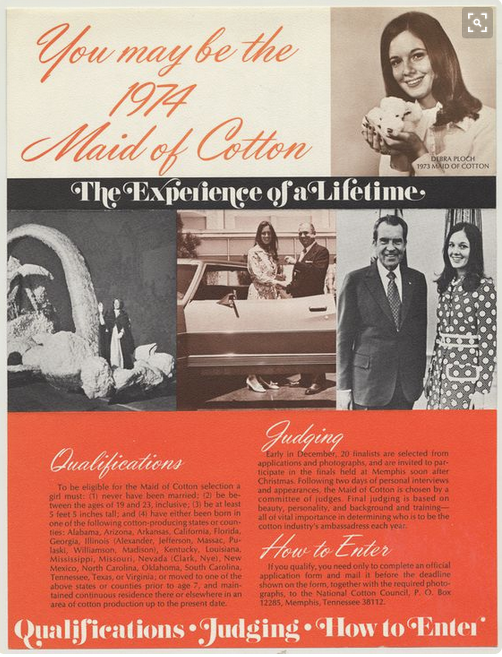
Posted By: Paul - Fri Jul 21, 2017 -
Comments (3)
Category: Beauty, Ugliness and Other Aesthetic Issues, Contests, Races and Other Competitions, 1930s, 1940s, 1950s, 1960s, 1970s, 1980s, 1990s
Outboard Motorboat Steeple Chase
The stuff with the girls in the first video is charming. But the insane part is the motorboat steeple chase race.
Apparently, a version of this is still practiced in--where else?--Australia. Although they seem to have eliminated the airborne part of the race.
Posted By: Paul - Sun Jul 09, 2017 -
Comments (3)
Category: Contests, Races and Other Competitions, Death, Oceans and Maritime Pursuits, 1950s, Australia, North America
Hillevi Rombin and her Performing Dogs
Hillevi Rombin (1933-1996) was crowned Miss Universe in 1955. Her talents included gymnastics, track & field, skiing, and sausage snake charming. She demonstrated the latter with her "performing dogs" for National Kraut and Frankfurter Week.More info: wikipedia, cardcow.com
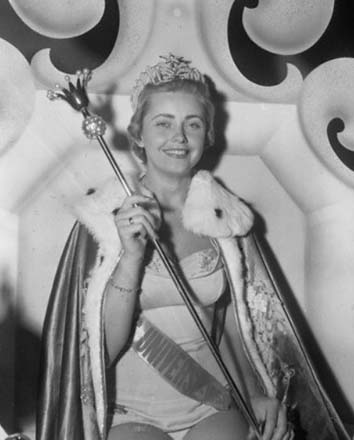
Rombin crowned Miss Universe
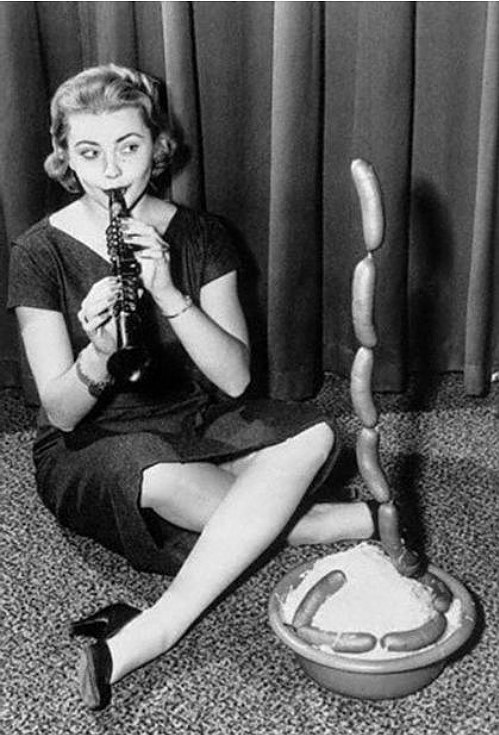
1955: with her performing dogs
Posted By: Alex - Wed Jul 05, 2017 -
Comments (3)
Category: Awards, Prizes, Competitions and Contests, 1950s
The Eager Beaver Truck
Article here.
Posted By: Paul - Wed Jun 21, 2017 -
Comments (1)
Category: Technology, 1950s, Armed Forces, Trucks
Follies of the Madmen #318
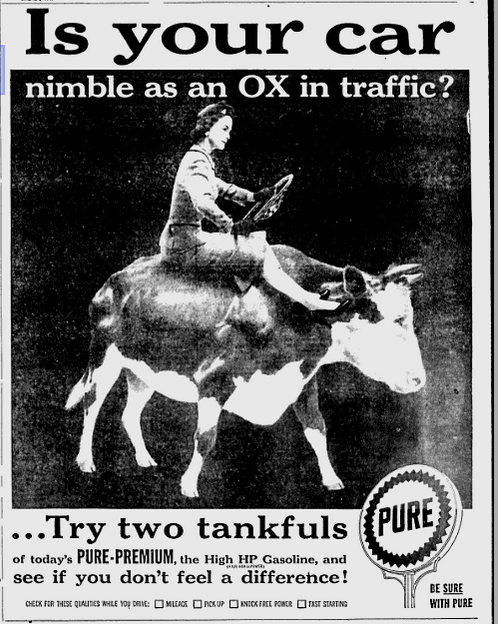
I don't get it. Is "nimble as an ox" good or bad, the before or after status of fueling up with their gas?
Original ad here.
Posted By: Paul - Tue Jun 20, 2017 -
Comments (4)
Category: Animals, Business, Advertising, Products, 1950s, Cars
Miss Bomarc Interceptor Missile
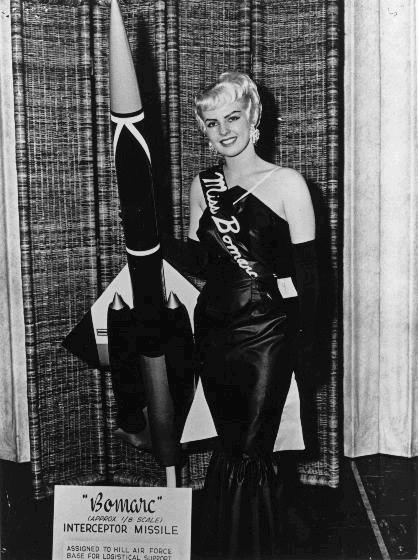
The missile is the supersonic Bomarc anti-aircraft missile developed by Boeing and the University of Michigan Aeronautical Research Center. The woman is 18-year-old Fran Frost. The year was 1958.
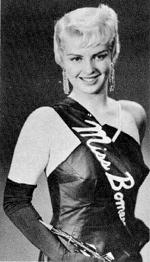
Fran Frost went on to be Miss Utah State Fair, Miss Dairy Queen, and Miss World Contact Lens, but then retired from modeling.
Read her full story at Conelrad Adjacent.
Posted By: Alex - Sat Jun 10, 2017 -
Comments (3)
Category: Awards, Prizes, Competitions and Contests, Beauty, Ugliness and Other Aesthetic Issues, 1950s, Weapons
Mystery Gadget 49
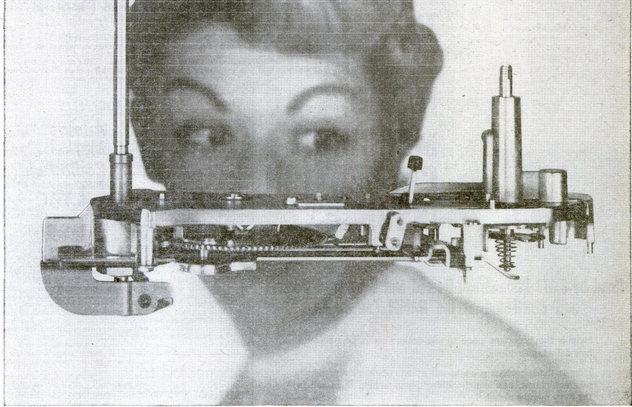
Part of a household appliance once more common than it is nowadays. But what?
The answer is here.
And after the jump.
More in extended >>
Posted By: Paul - Thu Jun 08, 2017 -
Comments (4)
Category: Appliances, 1950s

| Who We Are |
|---|
| Alex Boese Alex is the creator and curator of the Museum of Hoaxes. He's also the author of various weird, non-fiction, science-themed books such as Elephants on Acid and Psychedelic Apes. Paul Di Filippo Paul has been paid to put weird ideas into fictional form for over thirty years, in his career as a noted science fiction writer. He has recently begun blogging on many curious topics with three fellow writers at The Inferior 4+1. Contact Us |



